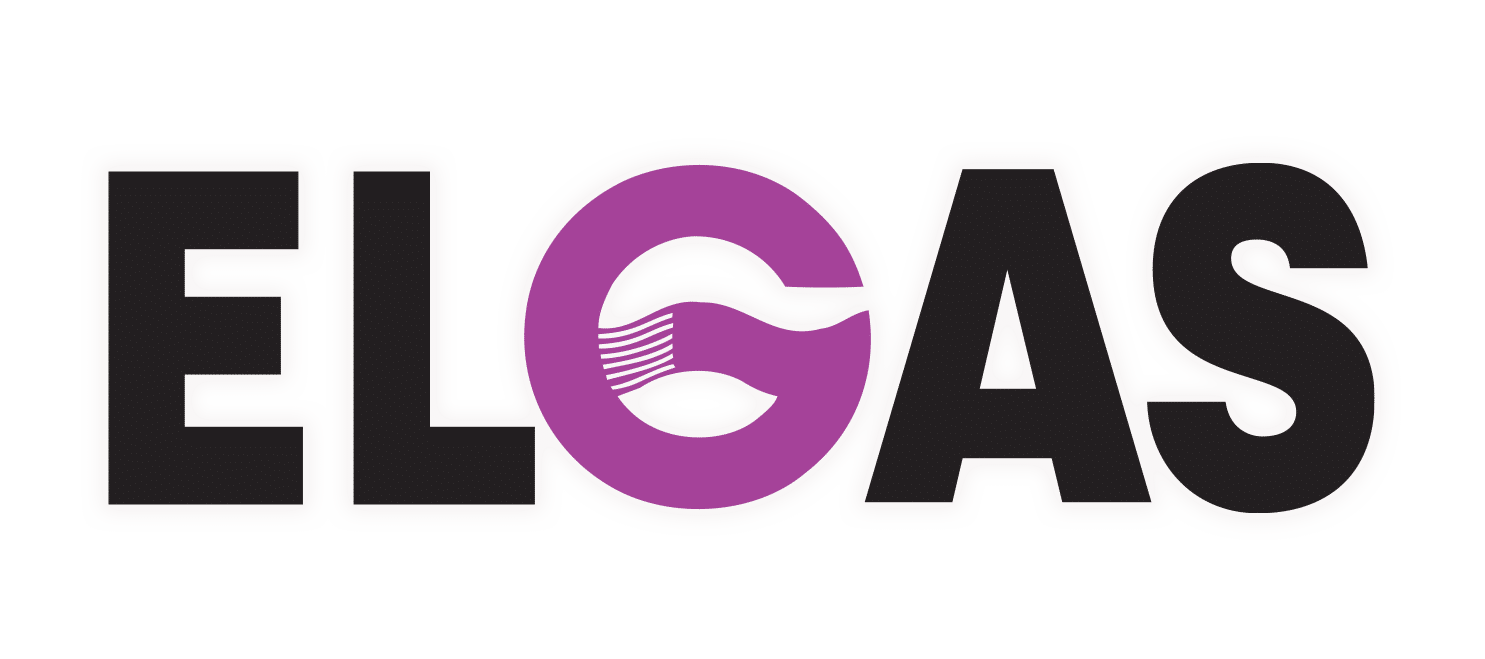LPG Gas Bottle Location Regulations & Gas Compliance Certificate
LPG Gas Bottle Location Regulations – Installation Guidelines
In summary:
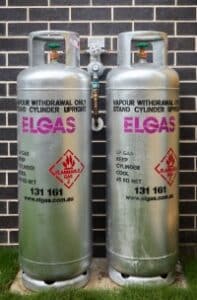 Ensure the gas bottle installation is upright and stable.
Ensure the gas bottle installation is upright and stable.- Keeping the gas cylinder upright will ensure the pressure relief valve functions correctly.
- Gas bottles must be placed on a solid base that is not subject to the accumulation of water.
- Gas bottles must be placed safely away from ignition sources — primarily electrical devices and flames — including include electrical switches, power points, air conditioning, compressors, pumps, lights, and sensors in the event of a leak.
- Gas bottles cannot be placed close to wall openings, including windows, doors and vents, to preclude possible entry and collection of gas in enclosed spaces.
- Gas bottles must be a safe distance from openings to below ground spaces, for instance drains and pits, to prevent any possible build up of the heavier than air LPG.
- Gas bottles must be placed in well ventilated locations, avoiding alcoves, enclosures, under a building or stairway to prevent possible accumulations of gas.
- Line of sight must be maintained for in situ tanker deliveries.
- Ensure your installation point provides easy access during gas cylinder delivery and replacement and meets Australian Standards.
Please read more for additional information and the required safe distances for placement…
Why You Need to Know
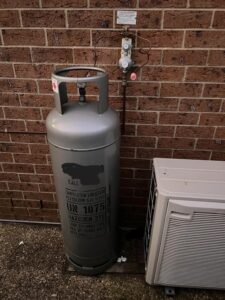 The image shown does not comply with the regulations, as the air conditioning compressor is well within the exclusion zone.
The image shown does not comply with the regulations, as the air conditioning compressor is well within the exclusion zone.
Wall Openings and Drains Affect Gas Bottle Location

Gas Bottle Exclusion Zone for Exchange & Tanker Filling


Line-of-Sight to Tanker
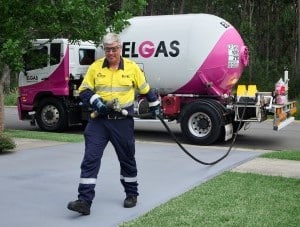
Tanker Gas Hose Length for Tanker Filled Installations
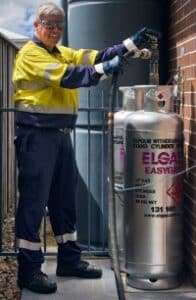 It is important to remember that the installation needs to be within the reach of the tankers’ gas hose, if the cylinders or tanks are to be filled on-site by a tanker..
It is important to remember that the installation needs to be within the reach of the tankers’ gas hose, if the cylinders or tanks are to be filled on-site by a tanker..
For example, most tankers have two gas hose reels.
The low flow gas hose, for cylinders, can be 40M to 60M.
The high flow gas hose, for bulk tanks (‘bullets’) range from 15M to 40M in length.
Check with your local gas supplier, as they can advise what is available in your area.
So, it depends on the customer installation type.
For example, residential installations typically have a gas hose length of 60M, as they are filled with a low flow gas hose.
Please note that this is a fully stretched straight line measurement.
You should design the installation to be less in distance, for practical access.
Delivery Guidelines for Home Gas Bottles
Here are some simple guidelines for home gas bottles to help you, as well:
- Your driveway and pathway to the home gas bottles installation area must be free of obstructions.
- Unlock gates so that the driver has access to the gas bottles.
- Keep pets restrained.
Gas Bottle Changeover Valves
 The typical home has two 45kg gas bottles.
The typical home has two 45kg gas bottles.Get $140 in LPG Account Credits!
Choice of 2-Year Fixed or Variable 45kg Gas Bottle Price
No Lock-in Contracts
We return your old gas bottles for you
It is a great time to switch to ELGAS
What is a Gas Compliance Certificate, Plate or Badge?
- A gas compliance certificate is documentation that the gas installation complies with the standards and regulations issued by the governing body.
- It is issued by the gas fitter who performed the installation.
- The gas fitter is typically liable to correct any installation related defects.
- It may vary in form and can be a certificate, plate or badge.
- It let’s gas suppliers know that the installation is safe to supply.

Gas Fitters Provide the Certificates
What Do They Mean?
Protection For You
Please see How To Add LPG Gas to Your Home for more details
No Gas Without One
Compliance certificates are also necessary for obtaining your gas supply, as gas providers cannot supply an uncertified installation.
The certificate needs to be available before the gas is connected for the first time.
In most States, the gas fitter will give you a copy to pass on to your gas supplier.
Compliance Requirements Vary by State
• Queensland – Certificate of Compliance
Gas compliance certificate QLD
• NSW – Compliance Plate attached near the installation or a Certificate of Inspection/Compliance
Gas compliance certificate NSW
• ACT – Compliance Plate attached near the installation
ACT Residents Learn More
• Victoria – Certificate of Compliance
Gas compliance certificate Victoria
• South Australia – Certificate of Compliance
Gas certificate of compliance SA
• Tasmania – LP Gas Storage Notice (Start Work Notice)
Gas compliance certificate Tasmania
• Western Australia – Notice of Completion (NOC) and Compliance Badge
• Northern Territory – Compliance Plate attached near the installation
Use Licensed Gas Fitters
Licensed Gas Fitters Required in All States
All states and territories require the use of a licensed gas fitter for all gas related work, including both LPG and natural gas.
Do not attempt to do gas work yourself or to use a tradesperson who does not have specialist gas training and a specific gas fitter license.
Unlicensed gas work is illegal and potentially dangerous.
Your manufacturer’s warranty and insurance cover may also be void if gas work is performed by an unlicensed person.
Licensing
Licensed gas fitters have a gas fitter number, issued by their State regulatory authority, authorising them to carry out gas fitting work.
Some States have different endorsements for different types of gas fitting work, such as gas appliance conversions.
Ask to see the gas fitter’s license to confirm that the tradesperson is entitled to do the specific type of gas work you require.
Gas Fitters vs Plumbers
Many gas fitters are also plumbers but not all plumbers are gas fitters.
If you require work to be done on a gas hot water system, make sure you get a tradesperson who is licensed for both the gas fitting and plumbing trades.
Also, you may need to ask the gas fitter if he does the specific kind of gas installation that you need, such as a gas fireplace.
Not all gas fitters are experienced at installing all types of gas appliances, so you should not hesitate to ask.
Compliance Certificates, Badges and Plates
Depending upon which State or Territory you live in, you will receive Notice of Compliance Certificate or a Compliance Badge/Plate will be affixed to the installation.
In it the gas fitter declares that the installation complies with all of the Australian Standards and statutory requirements.
If an installation is faulty, this also requires the gas fitter to come back and correct the defect.
Typical Gas Fitting Tasks
Gas fitters do many different types of gas fitting tasks including:
• Gas appliance installation, conversions, repairs and maintenance
• Gas bottle installation including gas regulators, changeover valves, pigtails and gas lines
• Installation and repairs of gas flue pipes.
• Installation of gas meters, valves and associated pipe work.
• Adjusting of gas pressure
• Installation of gas detection systems
• Leak testing and repairs
New Residential LPG customer?
New Business LPG customer?
Existing ELGAS customer?
- BBQ – Gas and Charcoal BBQ Features – Charcoal BBQ vs Gas BBQ Comparison - March 31, 2025
- GPL Gas (GPL Fuel) – GLP Gas – LPG Gasul: GLP-GPL Gas Station - March 26, 2025
- Think LPG When Building a New Home - February 26, 2025
Steve Reynolds
Technical Consultant
Steve Reynolds is a leading expert in the LPG industry with over 22 years of experience. As part of the national management team at ELGAS, Steve ensures the safe and efficient storage, handling, and transportation of LPG. He serves as the lead investigator for incidents and collaborates with authorities on industry developments.
Steve is a technical advisor to Standards Australia and Gas Energy Australia (GEA), and an active member of the World LPG Association (WLPGA), contributing to global standards and technical reviews. He holds a BSc. (Hons) in Industrial Chemistry from UNSW and has held senior safety and technical roles at ELGAS, making him a trusted authority in LPG safety and standards.
